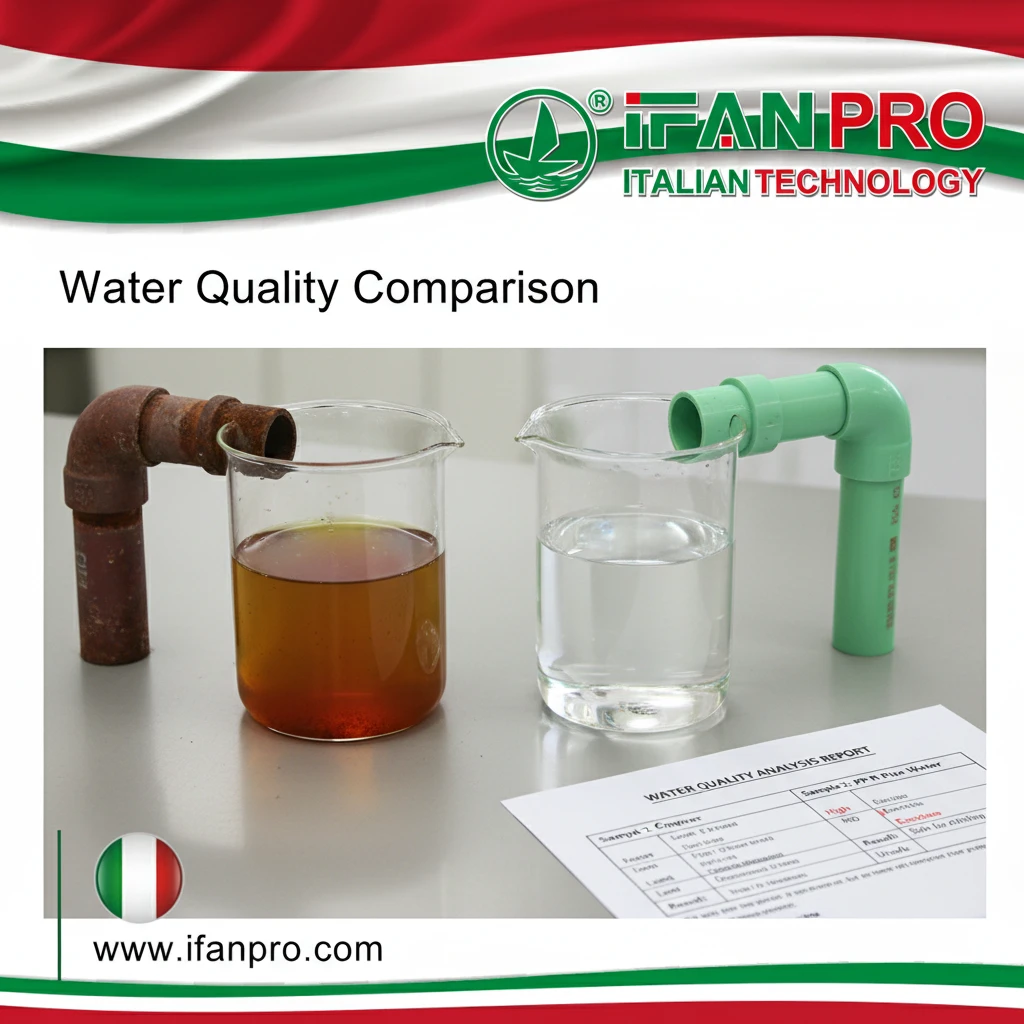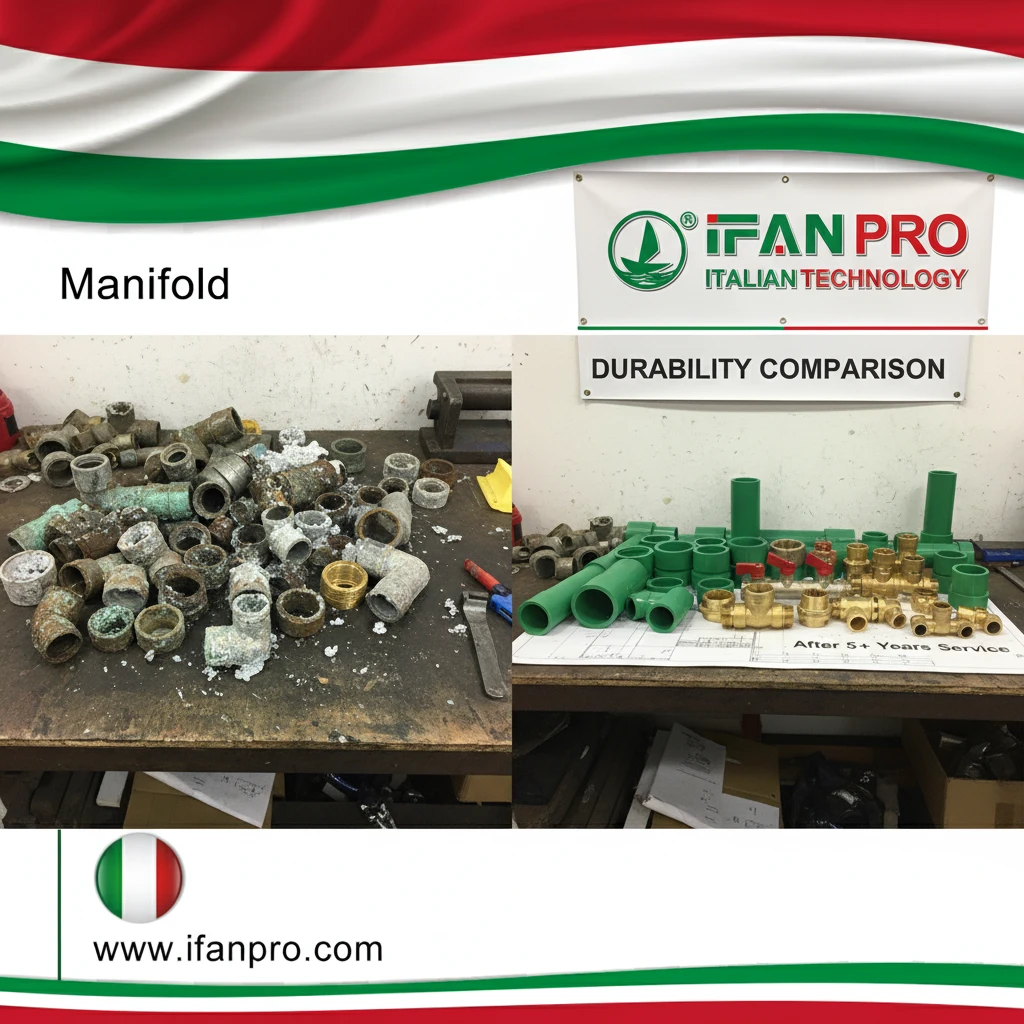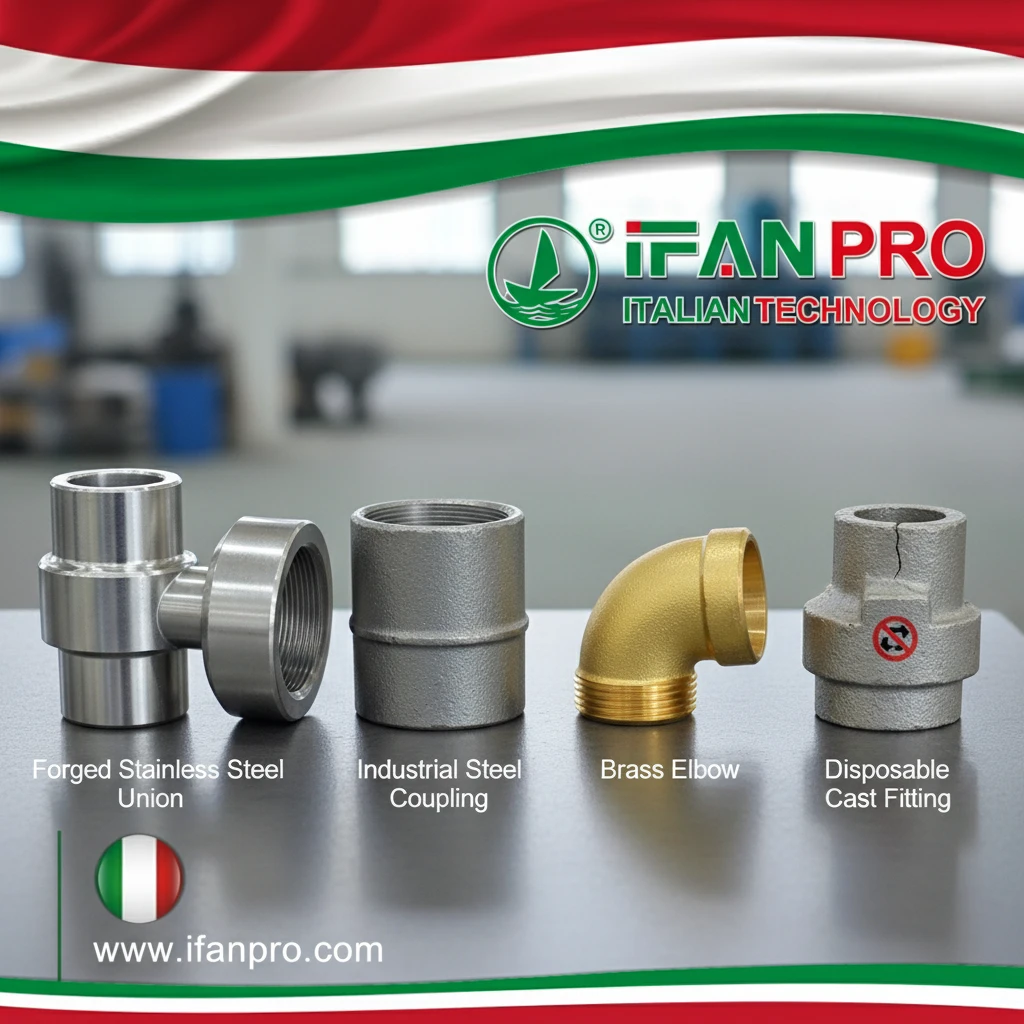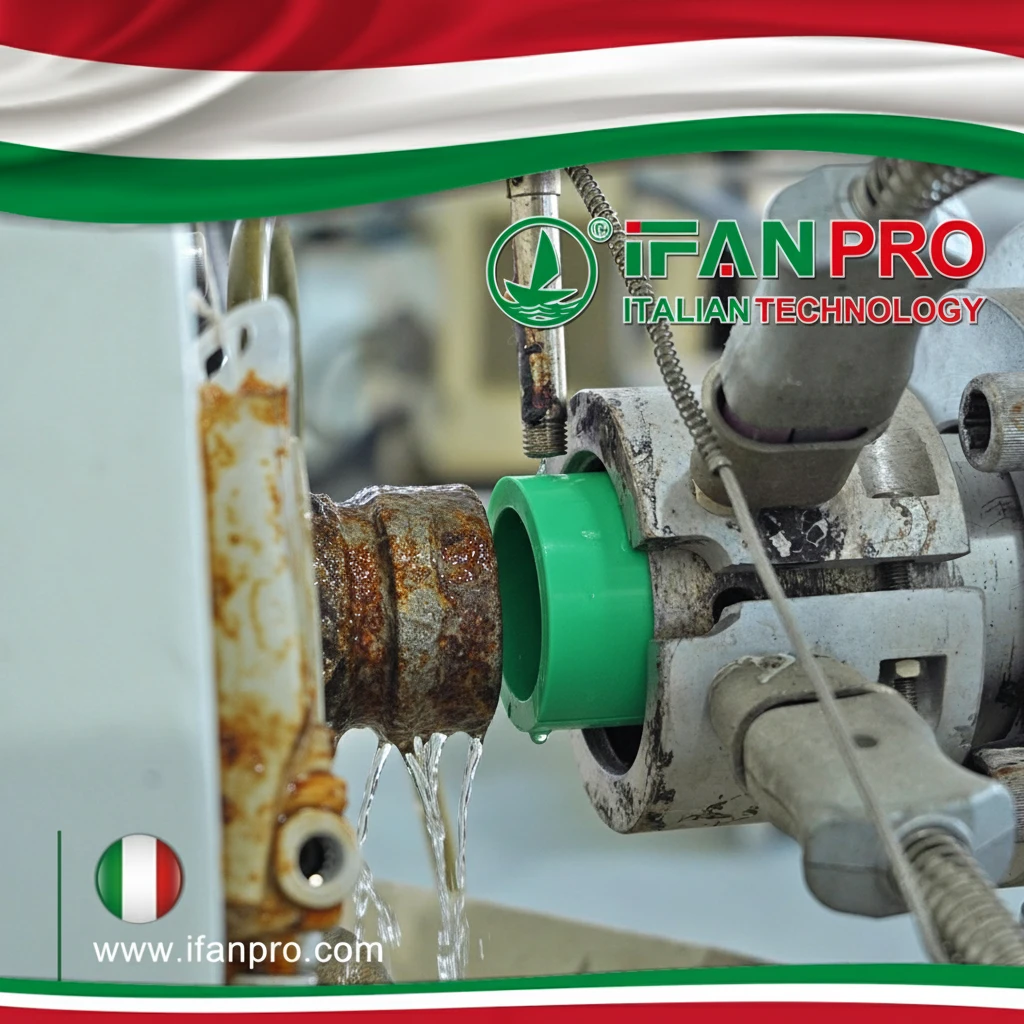I recently inspected a plumbing system where corrosion had caused extensive damage. This experience convinced me why corrosion-resistant fittings are essential for modern plumbing.
Corrosion-resistant fittings are crucial because they prevent rust and chemical damage that can compromise plumbing systems. They extend system lifespan, reduce maintenance costs, protect water quality, and maintain performance even in challenging water conditions, making them a smart investment for any property.
Now, let’s examine exactly how corrosion-resistant fittings deliver these important benefits.
How Do Corrosion-Resistant Pipe Fittings Extend Plumbing System Lifespan?
I’ve seen too many plumbing systems fail prematurely due to corrosion. The right fittings can make a decades-long difference.
Corrosion-resistant fittings extend plumbing system lifespan by eliminating the primary cause of pipe failure: rust and chemical degradation. Unlike steel or iron that corrode over time, materials like PP-R and brass maintain their structural integrity for decades, preventing leaks, bursts, and system breakdowns that shorten plumbing life.

The Corrosion Damage Process
Corrosion is a silent destroyer of plumbing systems. It works slowly but consistently, eating away at metal pipes from both inside and out. I’ve seen cases where corrosion reduced pipe walls by half their original thickness in just five years. This weakening leads to pinhole leaks, reduced water pressure, and eventually, catastrophic failures that require complete system replacement.
Water chemistry plays a significant role in corrosion. Water with high mineral content, varying pH levels, or high oxygen content accelerates corrosion. Even water that appears clean can contain elements that slowly destroy traditional metal pipes. Corrosion-resistant materials like PP-R plastic and high-quality brass are immune to these chemical reactions, maintaining their strength indefinitely.
Material Comparison for Longevity
Different materials offer varying levels of corrosion resistance. Here’s how they compare:
| Material Type | Устойчивость к коррозии | Expected Lifespan | Vulnerabilities |
|---|---|---|---|
| Galvanized Steel | Poor | 15-25 years | Rust, scale buildup |
| Copper | Moderate | 40-50 years | Acidic water, pitting |
| Standard Brass | Good | 30-40 years | Dezincification |
| PP-R Plastic | Excellent | 50+ years | UV light (if exposed) |
| Stainless Steel | Excellent | 50+ years | Chloride corrosion |
Real-World Performance Evidence
In my work with IFAN, we’ve tracked plumbing systems using corrosion-resistant fittings for over twenty years. The data shows remarkable consistency: systems with PP-R fittings maintain 98% of their original flow capacity after two decades, while corroded metal systems often show 40-60% reduction. This proven longevity means property owners can avoid the major expense and disruption of system replacement.
The installation method also contributes to longevity. Corrosion-resistant plastic fittings use heat fusion rather than mechanical connections. This creates seamless joints that can’t corrode, unlike threaded connections that often fail first. For metal systems, proper installation techniques and protective coatings add extra years of reliable service.
What Cost Savings Do Corrosion-Resistant Plumbing Fittings Provide Long-Term?
The initial price difference often worries buyers, but the long-term math tells a different story.
Corrosion-resistant fittings provide significant long-term cost savings by eliminating frequent repairs, reducing water damage risks, and extending system replacement cycles. While they may cost 10-20% more initially, they typically deliver 200-300% return on investment over the system’s lifetime through avoided maintenance and replacement costs.

Understanding Total Ownership Costs
Most people focus only on the purchase price when choosing plumbing fittings. However, the true cost includes installation, maintenance, repairs, and eventual replacement. Corrosion-resistant fittings shine when you consider this complete financial picture. I’ve helped clients calculate that corrosion-related problems typically cost 3-5 times the original installation cost over twenty years.
The most immediate savings come from reduced maintenance. Corroded pipes require regular attention: leak repairs, joint replacements, pressure adjustments, and sediment cleaning. One client saved $800 annually in maintenance costs after switching to corrosion-resistant PP-R systems. These savings begin immediately and continue year after year.
Breakdown of Cost Savings
Here’s how the financial benefits accumulate over time:
| Cost Category | Standard Fittings | Corrosion-Resistant Fittings | 10-Year Savings |
|---|---|---|---|
| Initial Cost | $ | $$ | – |
| Annual Maintenance | $300-500 | $50-100 | $2,500-4,000 |
| Repair Costs | $200-400/year | $20-50/year | $1,800-3,500 |
| System Replacement | 20-25 years | 50+ years | $5,000-15,000 |
| Water Damage Risk | High | Low | $2,000-10,000 |
Water and Energy Efficiency
Corrosion doesn’t just cause leaks—it also reduces system efficiency. As corrosion builds up inside pipes, water pressure drops, forcing pumps to work harder and increasing energy costs. The smooth interior of corrosion-resistant materials maintains optimal flow characteristics, saving 5-15% on pumping costs compared to corroded systems.
Perhaps the biggest financial benefit is avoiding catastrophic failure. I’ve seen corrosion cause sudden pipe bursts that flooded buildings, requiring expensive water damage restoration in addition to plumbing repairs. Corrosion-resistant fittings essentially eliminate this risk, providing peace of mind and potential insurance savings.
The longevity advantage creates the largest financial benefit. While traditional systems might need replacement after 20-25 years, corrosion-resistant systems typically last 50+ years. This means avoiding a complete system replacement, which often costs more than the original installation due to demolition, updated codes, and increased labor rates.
Why Are Corrosion-Resistant Pipe Fittings Essential for Water Quality Protection?
After testing hundreds of water samples, I’ve seen how corrosion affects water safety.
Corrosion-resistant fittings are essential for water quality protection because they prevent rust, heavy metals, and other contaminants from leaching into drinking water. Materials like PP-R plastic and certified brass maintain water purity by creating a stable barrier that doesn’t interact with water or introduce harmful substances.

Contamination Mechanisms
Corrosion introduces multiple types of contaminants into water systems. The most visible is rust, which causes discolored water and sediment problems. More concerning are invisible threats like lead, copper, and zinc that can leach from corroding metal fittings. I’ve tested water samples from corroded systems that showed copper levels exceeding safety standards by 300%.
The problem escalates with temperature changes. Hot water accelerates corrosion and increases metal leaching rates. This is particularly concerning for drinking water and cooking applications. Plastic corrosion-resistant materials like PP-R maintain complete stability regardless of water temperature, ensuring consistent water quality.
Health Protection Standards
Modern corrosion-resistant fittings must meet strict certification standards for drinking water applications:
| Certification | Purpose | Importance |
|---|---|---|
| NSF/ANSI 61 | Drinking water safety | Ensures no harmful leaching |
| FDA Compliance | Food contact safety | Verifies material purity |
| WRAS Approval | UK water standards | International safety validation |
| ACS | French water standards | Additional safety assurance |
Biological Contamination Prevention
Corrosion creates surface irregularities and scale buildup that provide perfect breeding grounds for bacteria. The rough interior of corroded pipes traps nutrients and protects microorganisms from disinfectants. In contrast, corrosion-resistant materials maintain smooth surfaces that don’t support bacterial growth or biofilm formation.
Material choice directly impacts chemical stability. Some metals react with water treatment chemicals like chlorine, reducing their effectiveness and creating byproducts. Plastic corrosion-resistant materials are chemically inert, maintaining water treatment efficacy and preventing unwanted chemical reactions.
The protection extends throughout the entire system. Even one corroding fitting can contaminate water throughout a building. That’s why consistent use of corrosion-resistant materials at every connection point is crucial for maintaining water quality from source to tap.
How Do Corrosion-Resistant Fittings Perform in Harsh Water Conditions?
Extreme water conditions test fittings beyond normal limits, revealing their true quality.
Corrosion-resistant fittings perform excellently in harsh water conditions because they’re specifically engineered to withstand aggressive elements like high mineral content, extreme pH levels, and high temperatures. Materials like PP-R and specialty alloys maintain their integrity and performance where standard fittings would rapidly deteriorate.

Challenging Water Types
Through IFAN’s testing laboratory, we’ve evaluated fitting performance under various harsh conditions. Highly acidic water (low pH) rapidly attacks metal fittings, while highly alkaline water (high pH) can damage certain plastics. Superior corrosion-resistant materials like PP-R perform well across the entire pH spectrum, from highly acidic to highly alkaline conditions.
Water with high mineral content presents another challenge. Hard water causes scale buildup that traps moisture against metal surfaces, creating concentrated corrosion cells. The non-stick surface of plastic corrosion-resistant fittings prevents scale adhesion, maintaining clean interior surfaces and consistent water flow regardless of mineral content.
Performance in Extreme Environments
Different harsh conditions require specific material properties:
| Water Condition | Standard Fitting Risk | Corrosion-Resistant Solution |
|---|---|---|
| High Chloride | Rapid pitting corrosion | CPVC or PP-R plastic |
| Low pH (Acidic) | Metal dissolution | PP-R or specialty plastics |
| High Temperature | Accelerated corrosion | Heat-stabilized PP-R |
| High Oxygen | Oxidation and rust | Non-metallic materials |
| Stagnant Water | Localized corrosion | Uniform resistant materials |
Temperature Extremes
High temperatures dramatically increase corrosion rates. In hot water systems, I’ve seen standard fittings fail in just 3-5 years due to thermal acceleration of chemical reactions. Quality corrosion-resistant materials like temperature-rated PP-R maintain stability up to 95°C, making them ideal for boiler connections and hot water circulation systems.
Salty or brackish water represents one of the most challenging environments. Chlorides in salt water cause rapid pitting corrosion in stainless steel and accelerate galvanic corrosion between different metals. Non-metallic corrosion-resistant fittings are completely immune to salt water damage, making them perfect for coastal properties and marine applications.
The proof comes from real-world installations. We’ve monitored corrosion-resistant fittings in aggressive water conditions for over a decade with zero failures. Meanwhile, standard fittings in the same environments typically show significant corrosion within two years and require replacement within five years. This performance difference becomes particularly valuable in areas with known water quality issues or extreme environmental conditions.
Заключение
Corrosion-resistant fittings deliver unmatched value through extended lifespan, significant cost savings, water quality protection, and reliable performance in challenging conditions. For proven corrosion-resistant solutions, choose IFAN’s PP-R fittings for your next plumbing project.














Последние комментарии